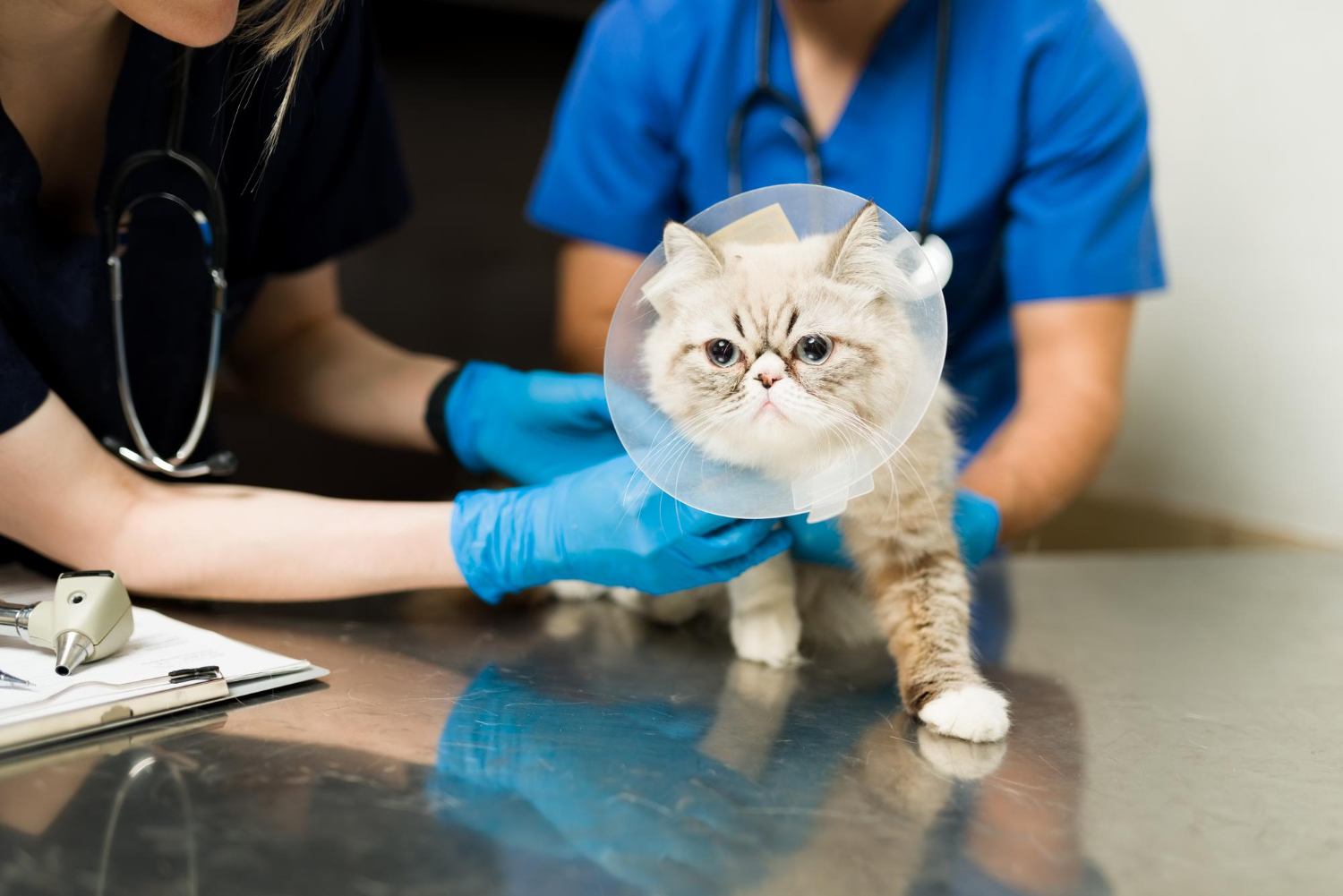
Pet Insurance for Cats: Coverage and Costs
Your cat might rule the roost — curling up wherever they please, knocking things off shelves, and choosing when they want cuddles — but when something goes wrong, you’re the one holding the vet bill.
Whether it’s an unexpected tumble, a sudden illness, or something more serious like kidney disease or diabetes, veterinary care for cats can be expensive. That’s where pet insurance for cats comes in — giving you peace of mind and financial backup when your feline friend needs it most.
But not all cat insurance plans are created equal. Some cover a broad range of treatments and emergencies, while others leave you vulnerable to fine print exclusions or painful out-of-pocket costs. So, how do you know what’s worth paying for? What does a good plan really include? And how much can you expect to spend?
This guide unpacks it all — from what cat health coverage really means, to how you can find a plan that fits your budget without compromising on care.
Let’s get your questions answered so you can make a decision with confidence and protect your kitty for whatever life throws its way.
Why Pet Insurance for Cats Is a Smart Choice
Cats are often seen as low-maintenance pets, and in many ways, they are. But when something goes wrong, costs can rise quickly. A simple blood test can cost over £100. Emergency surgery? Think £1,500 and up.
Pet insurance offers:
- Financial protection when faced with sudden illness or injury
- Access to better care, including diagnostics, medications, and aftercare
- Peace of mind, knowing you’re covered when it matters most
- Support for long-term conditions, such as diabetes, hyperthyroidism, or arthritis
According to the ABI, the average pet insurance claim in the UK is over £850, and that number is even higher for cats needing chronic treatment or surgery.
A good plan doesn’t just protect your wallet — it gives your cat the best shot at a full, healthy life.
What Cat Insurance Plans Typically Cover
The best cat insurance plans provide wide-ranging coverage for accidents, illnesses, and more. Let’s break it down.
1. Vet Fees

This is the heart of any policy. Most plans will cover the cost of:
- Consultations
- Diagnostic tests (blood work, urinalysis, imaging)
- Surgery and hospital stays
- Medications and post-op care
- Chronic condition management (if included in your plan type)
2. Dental Treatment
This varies widely by insurer. Some plans include:
- Dental injuries (e.g. broken teeth from trauma)
- Dental illness (e.g. gingivitis or tooth decay) — but usually only with regular dental checks on record
Tip: If your cat’s prone to dental issues, check the fine print. Many insurers require proof of annual check-ups to honour dental claims.
3. Complementary Therapies
Increasingly, insurers are covering holistic and supportive treatments such as:
- Physiotherapy
- Hydrotherapy
- Acupuncture
- Chiropractic care
These are usually covered if prescribed by a vet and used to aid recovery post-surgery or for pain management.
4. Behavioural Conditions
Cats can suffer from anxiety, aggression, or compulsive behaviours. Some plans cover behavioural treatment, but typically only when diagnosed and referred by a vet.
What’s Usually Not Covered?
Even the best policies have limitations. Common cat insurance exclusions include:
- Pre-existing conditions
- Routine care (vaccinations, flea/worming, check-ups)
- Spaying/neutering
- Pregnancy and breeding costs
- Cosmetic or elective procedures
- Behavioural problems without veterinary referral
Be wary of vague terms or marketing that promises “comprehensive cover” — always check the details.
Types of Cat Insurance Plans

There’s no one-size-fits-all policy, so let’s explore your options.
1. Accident-Only Policies
What it covers: Treatment for injuries caused by accidents, like falls, traffic incidents, or wounds.
Pros:
- Cheapest option
- Basic safety net
Cons:
- No illness cover
- Not suitable for older cats or chronic conditions
2. Time-Limited Cover
What it covers: Accidents and illnesses, but only for a set period (usually 12 months per condition).
Pros:
- Affordable
- Offers more than accident-only plans
Cons:
- Not ideal for ongoing issues
- The cover ends after the time limit or the financial cap is reached
3. Maximum Benefit Cover
What it covers: It pays a fixed amount per condition (e.g. £2,000) with no time restriction—until the limit is used up.
Pros:
- Suitable for one-off or short-term issues
- No strict time limit
Cons:
- Once you hit the cap, that condition’s no longer covered
4. Lifetime Cover
What it covers: Continuous cover for illnesses and injuries, with the limit resetting each year — ideal for chronic conditions.
Pros:
- Most comprehensive option
- Great for ageing or pedigree cats
Cons:
- Highest premiums
- Requires continuous renewal to maintain cover
How Much Does Cat Insurance Cost?
Prices vary depending on:
- Your cat’s age
- Breed (pedigree cats often cost more to insure)
- Location (urban vet costs are higher)
- Type of cover (lifetime cover = higher premium)
- Excess amount (higher excess = lower monthly cost)
Typical Monthly Costs (Estimates):
| Cover Type | Average Monthly Premium |
| Accident-Only | £5–£8 |
| Time-Limited | £10–£15 |
| Maximum Benefit | £15–£25 |
| Lifetime Cover | £20–£40+ |
Pro tip: Premiums increase as your cat ages. Starting early often locks in better rates and fewer exclusions.
Factors That Affect Your Premium
When getting a quote, keep in mind:
- Breed-specific conditions (e.g. Persians are prone to kidney disease)
- Pre-existing health issues
- Indoor vs. outdoor lifestyle (outdoor cats are higher risk)
- Your chosen excess (e.g. £100 vs. £250 per condition)
- Optional extras like dental or travel cover
Real-Life Example: Charlie’s Kidney Crisis
Charlie, a 7-year-old British Shorthair, was diagnosed with early-stage kidney disease. His owner, Sam, had a lifetime policy with a £7,000 annual limit.
Over 18 months, Charlie needed:
- Blood tests
- Ultrasound imaging
- Prescription food
- Monthly medication
- Vet check-ups every 8 weeks
Total cost: over £3,400
Sam’s insurance covered all but the £100 annual excess. Without it, the bills would’ve forced painful financial decisions.
How to Choose the Right Cat Health Coverage

Here’s what to look for when picking a policy:
Must-Have Features:
- Lifetime cover, especially for older or pedigree cats
- High annual vet fee limit (aim for £6,000–£12,000)
- Dental illness cover, if your cat is prone to gum problems
- Chronic condition support with no per-condition caps
- Fast and flexible claims process (check reviews)
Nice-to-Have Add-Ons:
- Lost cat advertising and rewards
- Overseas travel cover (if you travel with your pet)
- Death/cremation cover
- Third-party liability (less relevant for indoor cats)
Recommended Cat Insurance Providers in the UK
Here are some popular and well-reviewed insurers for cat owners:
1. Petplan
- Excellent lifetime policies
- Trusted by many UK vets
- High claim acceptance rate
2. ManyPets (formerly Bought By Many)
- Pre-existing condition coverage available
- Affordable lifetime options
- Great customer reviews
3. Animal Friends
- Budget-friendly
- Wide policy range
- Donates to animal charities
4. Waggel
- Modern, app-based platform
- Transparent pricing
- Fast claims process
5. Agria Pet Insurance
- Strong pedigree and breeder cover
- Includes preventive care with some plans
Tip: Compare features side-by-side before committing — a slightly higher premium may offer significantly better value.
How to Reduce Cat Insurance Costs Without Compromising Cover
- Insure early — before conditions arise
- Choose a higher excess if you can afford it
- Bundle multi-pet plans if you have more than one animal
- Ask your vet about breed-specific risks
- Review your policy annually — upgrade if needed
Final Thoughts: Make an Informed Choice for Your Feline Friend
Your cat may be fiercely independent, but when they’re ill or injured, they depend entirely on you. And having reliable pet insurance for cats means you’re always ready to step up, with the confidence to say yes to the best care.
Let’s recap what you’ve learned:
- Understand the types of cat insurance — from basic to lifetime
- Know what’s included and what’s not
- Choose a cover that fits your cat’s breed, age, and health risks
- Compare policy features, not just price
- Be proactive — ensure that problems don’t arise
In a world where cats hide pain so well, insurance offers peace of mind you didn’t know you needed — until you really need it.


